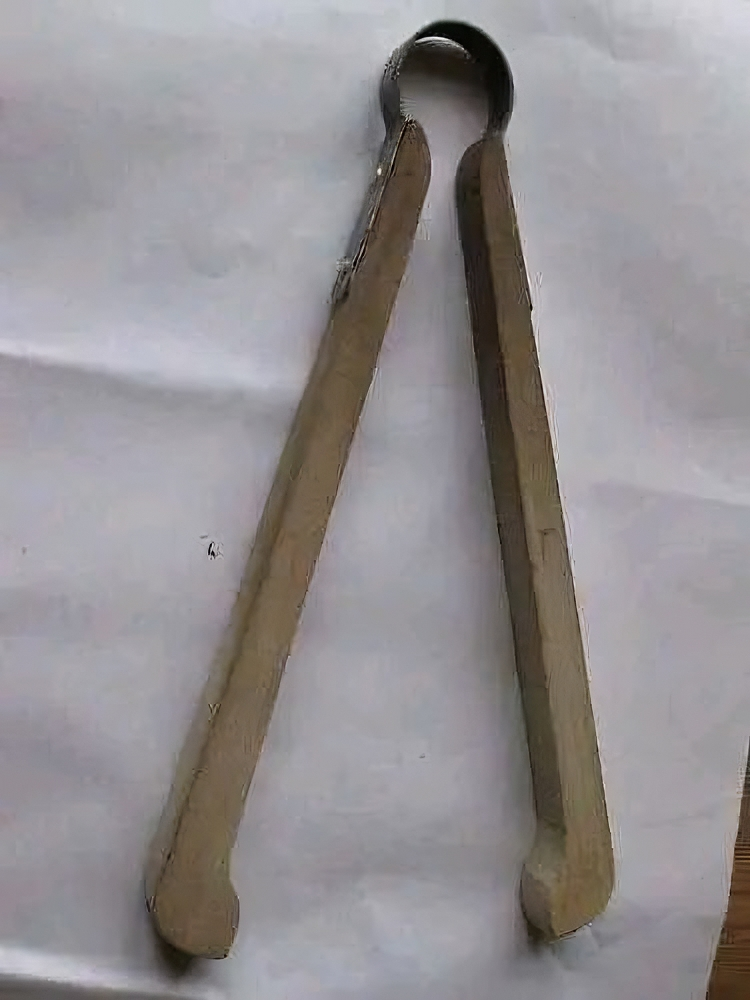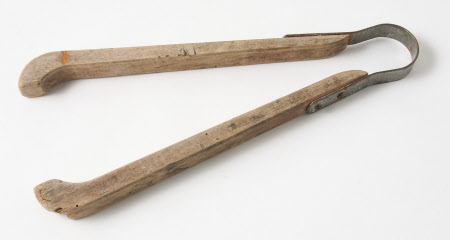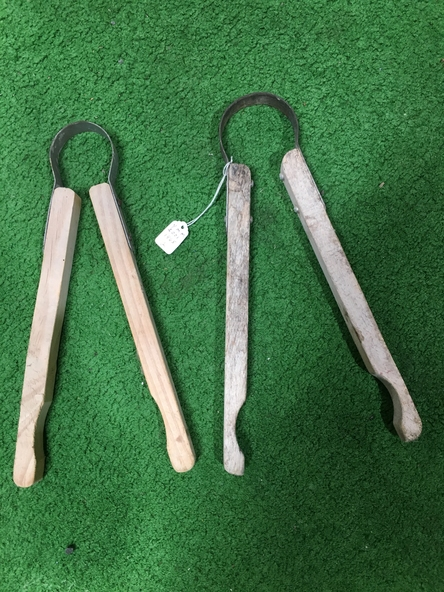In a world dominated by modern laundry machines and high-tech gadgets, it’s easy to forget the simple tools that once made laundry day bearable. Among these is the washing tongs—a humble yet indispensable tool used to handle hot, wet laundry straight from boiling water or copper tubs. Imagine trying to grip scalding clothes with bare hands! Washing tongs made this task manageable and safe.
While they may seem like an outdated relic today, washing tongs played a crucial role in laundry history. With two wooden arms joined by a flexible metal strip and indented ends for a firm grip, these tongs were essential for anyone doing laundry the old-fashioned way. Let’s dive into the fascinating history, purpose, and design of these unique tools and discover why they deserve a moment of appreciation.
A Brief History of Washing Tongs

The history of washing tongs is closely tied to a time when laundry was a labor-intensive task, requiring large copper tubs filled with hot water. Before washing machines transformed this chore, people relied on washing tongs to handle boiling laundry safely.
Origins and Evolution
Washing tongs emerged in the 19th and early 20th centuries when manual labor was integral to washing clothes. Boiling laundry to eliminate dirt and bacteria was a common practice, particularly before electric washing machines became widespread. This process required a tool that could safely handle steaming hot, water-soaked fabric—and so, washing tongs came into play. These simple tools enabled individuals to manage laundry effectively and safely during an era when convenience was a luxury.
Purpose and Function of Washing Tongs
Designed for both safety and convenience, washing tongs allowed individuals to lift clothes from boiling water without burning themselves. They were especially popular in households with copper tubs for heating and washing laundry. The lightweight design and easy grip made washing tongs essential for anyone who needed to manage wet clothes without risking injury.
Physical Characteristics of Washing Tongs
The design of washing tongs is both straightforward and functional. They consist of two long wooden arms connected at the top by a flat, flexible metal strip, which enables the arms to pivot, forming a sturdy and reliable grip.
Wood and Metal Construction
Most washing tongs were made from light pine wood, which is durable yet light enough to handle. Pine also resists warping and can stand up to moisture, making it ideal for this purpose. The flexible metal connector between the two wooden arms added stability, allowing the tongs to grip wet laundry effectively. This combination of wood and metal ensured that the tool didn’t conduct heat, keeping the user’s hands safe from burns.
Indented Ends for a Secure Grip
The ends of the wooden arms were often indented, which allowed for a more secure grip on wet clothing. This design feature was especially useful for lifting heavy, water-soaked fabrics from hot water, reducing the risk of the laundry slipping out of the tongs and splashing scalding water.
The Role of Washing Tongs in the Laundry Process

Before modern conveniences, washing tongs were essential for multiple steps in the laundry process, especially when it came to boiling and wringing clothes.
Handling Boiled Laundry Safely
Boiling clothes was a common method to kill germs and remove tough stains, but handling boiling water was no easy feat. Washing tongs made it possible to lift hot clothes from scalding water without touching them. This tool not only reduced the risk of burns but also made it easier to transfer clothes from the tub to a wringer or washboard for the next steps.
Rinsing and Wringing
After boiling, clothes usually needed to be rinsed in cooler water. Washing tongs made it simple to transfer hot, heavy clothing from the boiling tub to a rinse tub. Afterward, the clothes could be wrung out by hand or put through a manual wringer to remove excess water. This step-by-step process highlights the tongs’ versatility as an essential tool for various stages of laundry.
General Laundry Tool
Beyond handling hot laundry, washing tongs were handy for sorting and transferring clothes, making them an all-purpose tool in the laundry process. For households managing multiple loads, the tongs also helped prevent cross-contamination, allowing users to handle clothing without direct contact.
Washing Tongs: A Testament to Ingenuity and Simplicity

Though they may seem outdated today, washing tongs represent the ingenuity of early laundry tools. Like many simple inventions, these tongs were designed with a specific purpose in mind and were incredibly effective for their intended use. Despite their simplicity, they solved a real problem: handling hot, wet laundry safely.
The durability and effectiveness of washing tongs speak to the practicality and resourcefulness of household tools from the past. Today’s modern washing machines may handle most of the work, but washing tongs remain a symbol of the hard work and innovation that past generations put into everyday chores.
Similar Tools and Their Role in Modern Life
While washing tongs have mostly disappeared from everyday use, various types of tongs are still widely used for different tasks. Here are some of the most common types of tongs you might recognize:
Kitchen Tongs
Kitchen tongs are a staple in most households, ideal for flipping meat on the grill, serving salad, and other food handling tasks. Unlike washing tongs, kitchen tongs are typically made from metal or heat-resistant plastic to ensure safe and effective food handling.
Barbecue Tongs
Designed specifically for grilling, barbecue tongs have longer handles to keep hands a safe distance from heat. They’re perfect for turning or moving large cuts of meat on the grill, and their design reflects a similar focus on safety and ease of handling.
Ice Tongs
Found in bars or at events, ice tongs have small, sharp ends to grip ice cubes securely. While less demanding than washing tongs, they serve a similar purpose by allowing users to handle slippery objects safely and conveniently.
The Cultural Significance of Laundry Tools
In many cultures, tools like washing tongs hold a special place in family life and tradition. Washing tongs, in particular, are a reminder of the labor-intensive chores that past generations undertook daily. They reflect the values of hard work, resilience, and ingenuity—traits that helped people make do with what they had and thrive despite challenging circumstances.
Today, as we enjoy the convenience of advanced laundry technology, washing tongs remind us of a time when people had to rely on simple, effective tools to make life a little easier. These tools not only served a practical purpose but also embodied the spirit of innovation that has paved the way for modern conveniences.
Conclusion: Celebrating the Legacy of Washing Tongs
Washing tongs may seem like relics of a bygone era, but they hold a unique place in the history of household chores. They remind us of a time when people had to rely on basic tools to get things done. Today, they serve as fascinating reminders of how innovation often begins with solving everyday problems.
So, the next time you toss your laundry into the washing machine, take a moment to appreciate the washing tongs. These wooden tools helped countless people manage their laundry with ease, showing that even the simplest inventions can make a world of difference. From their sturdy design to their practical purpose, washing tongs are enduring symbols of resilience and ingenuity that have earned their place in history.


